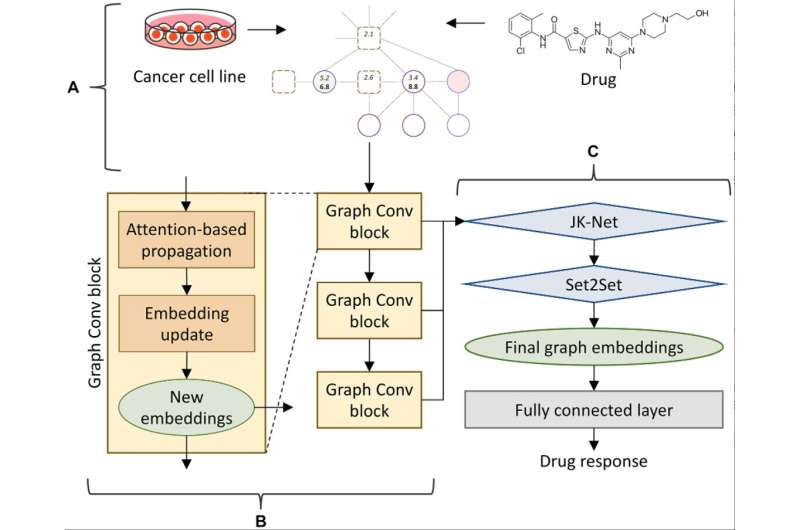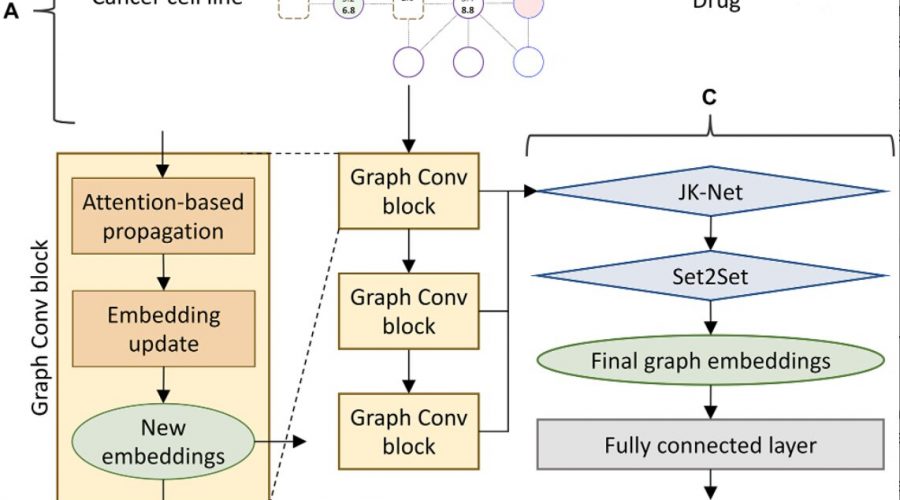Anti-cancer drug profiling with CancerOmicsNet

As documented in a new research paper published in Oncotarget, researchers from Louisiana State University have developed CancerOmicsNet—a graph neural network model to predict the growth rate of a cancer cell line after drug treatment.
“CancerOmicsNet is more advanced than many deep learning techniques operating in the Euclidean space, because it extracts knowledge directly from biological networks providing a more adequate representation of complex diseases such as cancer,” the paper reports.
CancerOmicsNet integrates multiple heterogeneous data, such as biological networks, genomics, inhibitor profiling, and gene-disease associations, into a unified graph structure. This novel method utilizes compact, cancer-specific networks constructed from protein-protein interactions, differential gene expression, disease-gene association, and drug inhibition data.
“In order to evaluate the performance of CancerOmicsNet, we conducted a cross-validation at the tissue level by removing from model training all cell lines originating from a particular tissue and then analyzing the accuracy for these cell lines.”
In this study, the researchers carefully evaluated the generalizability of CancerOmicsNet in a series of cross-validation benchmarks against different tumor tissues. Encouragingly, the cross-validated accuracy of CancerOmicsNet at the tissue level was significantly higher than those measured for other approaches on the same data.
“The performance of CancerOmicsNet, properly cross-validated at the tissue level, is 0.83 in terms of the area under the receiver operating characteristics, which is notably higher than those measured for other approaches.”
The researchers specify that the applicability of CancerOmicsNet is presently limited to kinase inhibitors, while alternative methods are applicable to other classes of therapeutics as well.
Source: Read Full Article
